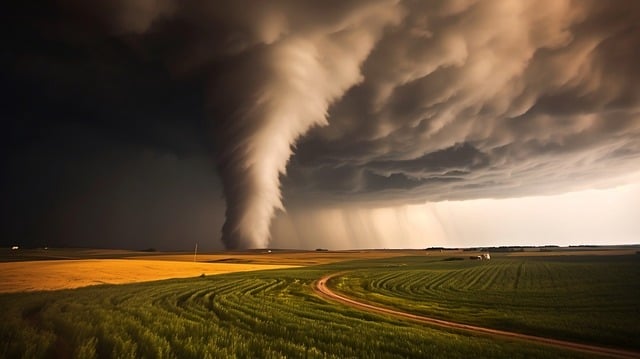
Tornado season 2024 has taken a turn for the worse, marking one of the most destructive and unpredictable periods in recent history. With severe weather patterns intensifying, communities across the tornado-prone regions of the United States are facing unprecedented challenges. This blog explores the various aspects of this tumultuous season, from the staggering statistics to the underlying causes and the resilience of those affected.
Unprecedented Tornado Activity
The 2024 tornado season has shattered records with an alarming number of tornadoes touching down across the country. By mid-May, the National Weather Service had already reported over 1,200 tornadoes, surpassing the annual average with several months still remaining in the season. These tornadoes have varied in intensity, with a significant number reaching EF3 and above on the Enhanced Fujita scale, indicating severe to devastating damage.
The sheer frequency and intensity of these tornadoes have overwhelmed local resources and emergency services. In many areas, residents have had little time to recover between storms, leading to a cumulative impact that has left communities struggling to rebuild. The continuous threat has also taken a psychological toll, with anxiety and stress levels rising as people brace for the next potential disaster.
The Human Impact
The human cost of this devastating tornado season is immense. Dozens of lives have been lost, and thousands of people have been displaced. Entire neighborhoods have been reduced to rubble, leaving families without homes and basic necessities. The emotional trauma of losing loved ones, homes, and cherished possessions cannot be understated.
Communities have shown remarkable resilience, banding together to support one another in the face of such adversity. Volunteers from across the country have stepped in to provide aid, while local organizations work tirelessly to offer shelter, food, and medical assistance. Despite the overwhelming challenges, these acts of kindness and solidarity highlight the strength of the human spirit in times of crisis.
The Role of Climate Change
Climate change is playing a significant role in the severity of the 2024 tornado season. Scientists have long warned that global warming could lead to more extreme weather events, and this year’s tornado season is a stark illustration of those predictions coming true. Warmer temperatures can lead to more volatile atmospheric conditions, creating the perfect environment for severe thunderstorms and tornadoes.
Increased moisture in the atmosphere, a result of higher ocean temperatures, provides additional fuel for these storms. This year, we have seen more frequent occurrences of supercell thunderstorms, which are the primary producers of the most powerful tornadoes. As climate change continues to alter weather patterns, it is likely that extreme tornado seasons like this one will become more common.
Preparedness and Response
Preparedness is crucial in mitigating the impact of tornadoes, and this season has highlighted both strengths and weaknesses in our current systems. Early warning systems have undoubtedly saved lives, giving people the critical minutes needed to seek shelter. Advances in meteorology and technology have improved our ability to predict and track these storms with greater accuracy.
However, the sheer volume of tornadoes has exposed gaps in preparedness and response efforts. Many communities lack the infrastructure and resources to cope with back-to-back disasters. There is a pressing need for increased investment in resilient infrastructure, such as storm shelters and reinforced buildings, as well as comprehensive disaster response plans that can be rapidly deployed when needed.
Looking Ahead: Building Resilience
As we move forward, it is essential to focus on building resilience against future tornado seasons. This involves a multi-faceted approach that includes improving early warning systems, investing in stronger infrastructure, and promoting community preparedness. Public education campaigns can play a vital role in ensuring that people know how to protect themselves and their families during a tornado.
Additionally, addressing the root causes of climate change is imperative to mitigating its impact on extreme weather events. Reducing greenhouse gas emissions and transitioning to renewable energy sources are critical steps in this direction. Policymakers, scientists, and communities must work together to develop and implement strategies that will help us adapt to a changing climate and reduce the severity of future tornado seasons.
In conclusion, the 2024 tornado season stands as a grim reminder of the power of nature and the vulnerabilities of our communities. By understanding the factors contributing to this unprecedented season and taking proactive steps to enhance preparedness and resilience, we can better protect ourselves and our loved ones in the face of future storms. The challenges are significant, but with concerted effort and cooperation, we can weather the storm and emerge stronger.
